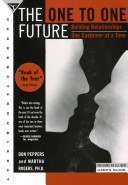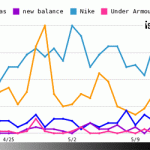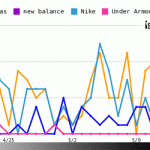Marketers are still grappling with finding the real value of digital marketing efforts. At the end of a promotional campaign, marketers find even the most “trackable” of web visits difficult to value. If we didn’t know this already, a survey of chief marketing officers, conducted by Atlanta’s Heidrick & Struggles, clarified the problem.
Kevin Hillstrom, author of Multichannel Forensics, suggests a reasonable way to approach web campaign valuation. It works well for e-commerce site visits, and even sheds light on valuing other types of visitors.
Placing value on non-buying visitors
Start the valuation process with the obvious: Visitors who immediately convert to a sale. But then keep going. Apply common sense numbers to those visitors who do not immediately buy. And why not? Visitors may come back two, three or more times before making a purchase. Like a fish that nibbles before biting, these “lost” visits aren’t so lost after all. They should be fairly depreciated, not totally ignored.
Here’s what Kevin says about ignoring all but the “one-visit” purchasers:
We try our hardest to allocate orders to the advertising vehicle that caused the order, seldom considering a series of events.
Take paid search as an example. Assume that a paid search campaign results in a 3% conversion rate and a $100 AOV [Average Order Value]. We run a profit and loss statement on the 0.03 * 100 = $3.00 demand generated by the campaign, factoring in the cost of the campaign.
What about the 97% of visitors who did not purchase?
Hillstrom asks, “What if you had this data?”:
- Of those who are left [i.e., 97% of the base], 50% will visit the website again within one week, with 3% converting, spending $100 each.
- Of those who are left, 50% will not visit again. Those who are left will visit again within three weeks, with 3% converting, spending $100 each.
- Of those who are left, 50% will not visit again. Those who are left will visit again within one month, with 3% converting, spending $100 each.
- Of those who are left, 50% will not visit again. Those who are left will visit again within four months, with 3% converting, spending $100 each.
- Of those who are left, 50% will not visit again. Those who are left will visit again within six months, with 3% converting, spending $100 each.
He goes on to explain:
There is value in each case, value that most of us choose not to measure.
When I iterate through the five cases above, I calculate an additional $2.75 of future visitor value. [I get $2.68 in my number-crunching, as the number in the lower right of the graphic shows. Here’s my math in a Google Spreadsheet.]
In other words, we measure the $3.00 generated by short-term conversion. We don’t always measure the $2.75 of future conversions.
Now there may be additional expenses associated with the $2.75 number — that customer might require additional paid search expense or might use a shopping comparison site, whatever. So we need to run a true profit and loss statement on the additional $2.75 generated by future visits.
If each first-time visitor (one that doesn’t convert immediately) is worth $0.30 profit over the next twelve months, you think differently about attracting visitors, don’t you?
I agree. The BrandWeek article I linked to in the first paragraph said that the CMOs surveyed, “Expressed an awareness of digital’s potential, along with a recognition that they weren’t close to tapping it.”
Building sales models that take into account the messy realities of online behavior is one way we can start.


